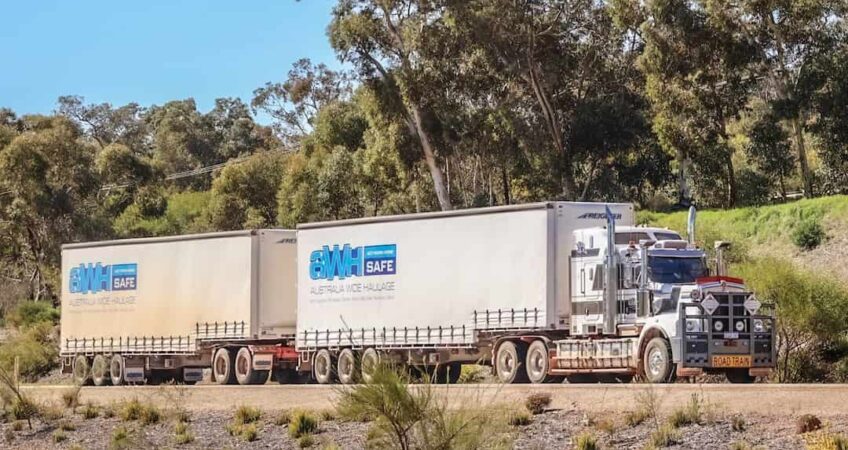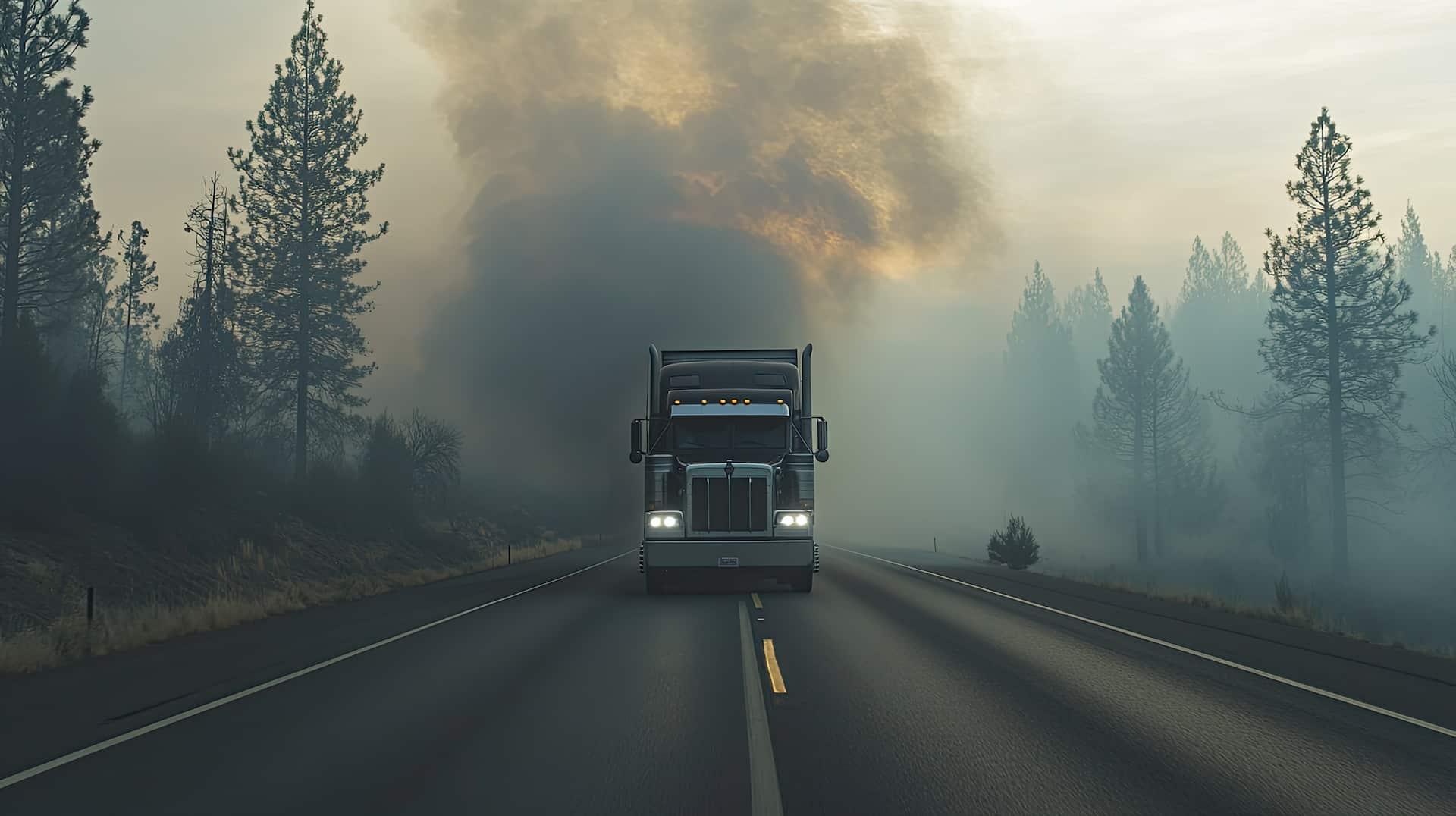
Hauling freight during bushfire season in Australia presents significant risks, such as reduced visibility and costly delays. To mitigate these risks, preparation, flexibility, and safety are essential for protecting people, cargo, and schedules.
We’ve seen how the right bushfire logistics planning can keep heavy haulage on track, even when Mother Nature doesn’t cooperate.
Here’s how to implement bushfire season logistics strategies to ensure safety, cost-efficiency, and customer satisfaction.
Understand Bushfire Risks on Freight Routes
Bushfires in Australia are becoming increasingly severe, leading to safety, financial, and operational concerns. Victoria, WA, NT, QLD, and regional New South Wales are considered high-risk regions for bushfires.
According to the Bureau of Infrastructure and Transport Research Economics (BITRE), bushfires and flooding are among the leading natural hazards disrupting Australian supply chains. Even without direct damage, closures and smoke can cause delays.
Read the full report here: Hydro Tasmania | TCFD Readiness Assessment Report Final Report.
Bushfire impacts on freight routes and heavy haulage include:
- Road Closures and Detours: Bushfires can lead to the closure of major highways and roads. For example, a bushfire during the 2019-2020 season led to a 12-day closure of the Eyre Highway. This critical route is the only sealed road connecting South Australia and Western Australia.
- Poor Visibility: Smoke from bushfires can reduce visibility, leading to hazardous driving conditions.
- Safety Concerns: Dense smoke from bushfires can lead to unhealthy air quality.
- Increased Costs: Road closures or visibility issues can cause delays and extended travel distances. This can dramatically increase freight costs, especially without proper bushfire logistics planning.
Build Contingency and Alternate Route Planning
Between road closures, road damage, and reduced visibility, bushfires can cause significant delays.
Alternative route planning should be a priority for bushfire logistics planning to help these avoid delays.
We follow and recommend these key bushfire season logistics strategies as part of alternative route planning:
- Always plan multiple route options
- Identify and map vulnerable routes
- Monitor government and fire authority updates in real time.
- Use telematics and GPS systems for live detours
- Monitor weather forecasts with real-time weather patterns and GPS tracking (we recommend paying special attention to wind direction, wind speed, and fire danger ratings)
- Regularly evaluate alternate routes and update and adjust backup routes as needed
We frequently reference the Department of Fire and Emergency Services (DFES) for official bushfire warnings (WA).
This helpful resource is available throughout Australia:
- NSW: Fire and Rescue NSW
- VIC – Fire Rescue Victoria | Fire Rescue Victoria
- QLD – Home Page | Queensland Fire Department
- SA – Metropolitan Fire Service | Metropolitan Fire Service
- NT – Fire and Rescue Service | NT Police, Fire & Emergency Services
You May Also Like: Interstate Transport Company Perth – Freight & Trucking Services
Strengthen Safety and Compliance Measures
Here are important strategies to strengthen heavy haulage bushfire safety and compliance measures:
- Ensure vehicles have fire extinguishers, emergency kits, and onboard fire suppression systems
- Train drivers in bushfire evacuation protocols and wildfire awareness training: Educate drivers on the risks associated with bushfires and best practices for prevention and emergency response.
- Meet chain of responsibility obligations in high-risk conditions
- Perform thorough equipment inspections before and after each trip to identify and address any fire hazards
You May Also Like: Truck Driver Fatigue Management Guide – Key Strategies
Manage Delivery Schedules and Customer Expectations
Another one of the best bushfire season logistics strategies is managing delivery schedules and customer expectations.
To help keep customers updated during bushfire delays, we recommend:
- Fast, Transparent Communication: If delays are a possibility due to bushfires or road closures, convey this information to your customers. Transparent communication is key to maintaining customer trust and expectations.
- Prioritisation: Prioritise critical deliveries to high-risk or remote areas.
- Be Realistic: Set realistic timelines to reduce driver stress and risk.
You May Also Like: Remote Delivery Services Perth – Reliable Remote Freight Delivery
Collaborate with Emergency Services and Local Authorities
Communication with local authorities and emergency services is crucial for safety and timely deliveries.
To maintain open, transparent communication with local authorities, be sure to:
- Work closely with DFES, police, and councils on road closures and detours
- Align delivery plans with fire authority alerts and restrictions
- Build trust with customers by showing proactive safety management
- Set up back-up communication channels in the event of a power outage as a result of bushfires
Prepare Sites and Equipment for Bushfire Conditions
Another important aspect of heavy haulage bushfire safety is site preparation.
We covered how to Prepare Your Site for Heavy Haulage Delivery in our last guide, but bushfire season requires additional steps.
Bushfire logistics planning requires site prep considerations that address emergency planning, unobstructed site access, and fire prevention.
To ensure a safe delivery site for bushfire conditions, we recommend these additional site prep steps:
- Clear delivery areas of flammable materials, including brush, rubbish, solvents, vegetation, debris, or dry grass
- Minimise fuel sources
- Secure an emergency water supply
- Position unloading zones in safe, accessible spaces
- Ensure emergency vehicles and responders have clear, safe site access if needed
- Properly maintain equipment and vehicles to avoid mechanical sparks
- Map out clear evacuation routes and ensure all routes are unobstructed
- Ensure all on-site workers are trained in emergency evacuation procedures
- Share a detailed site plan, including emergency contacts, with local authorities
- Have appropriate fire extinguishers on hand and ensure all staff members are trained on their location and safe usage
- Prohibit smoking on site
- Instruct drivers to park away from vegetation and in shaded areas to minimise heat
Partner with Australia Wide Haulage to Stay Prepared for any Scenario
Adaptability, clear communication, extensive planning, and strong networking are keys to successfully transporting freight during bushfire season.
With Australia experiencing increasing bushfires, heavy haulage bushfire safety is at the forefront of our operations.
Our expertise from decades of experience ensures safe, compliant, and efficient transport, even during bushfire season. We take a proactive approach to bushfire season logistics strategies to ensure the safety of our staff, your staff, and your equipment and freight.
We are proudly recognised as leaders in Australia’s heavy haulage industry, having successfully transported thousands of tonnes over the years. Contact us for assistance with bushfire logistics planning or for your free quote.

